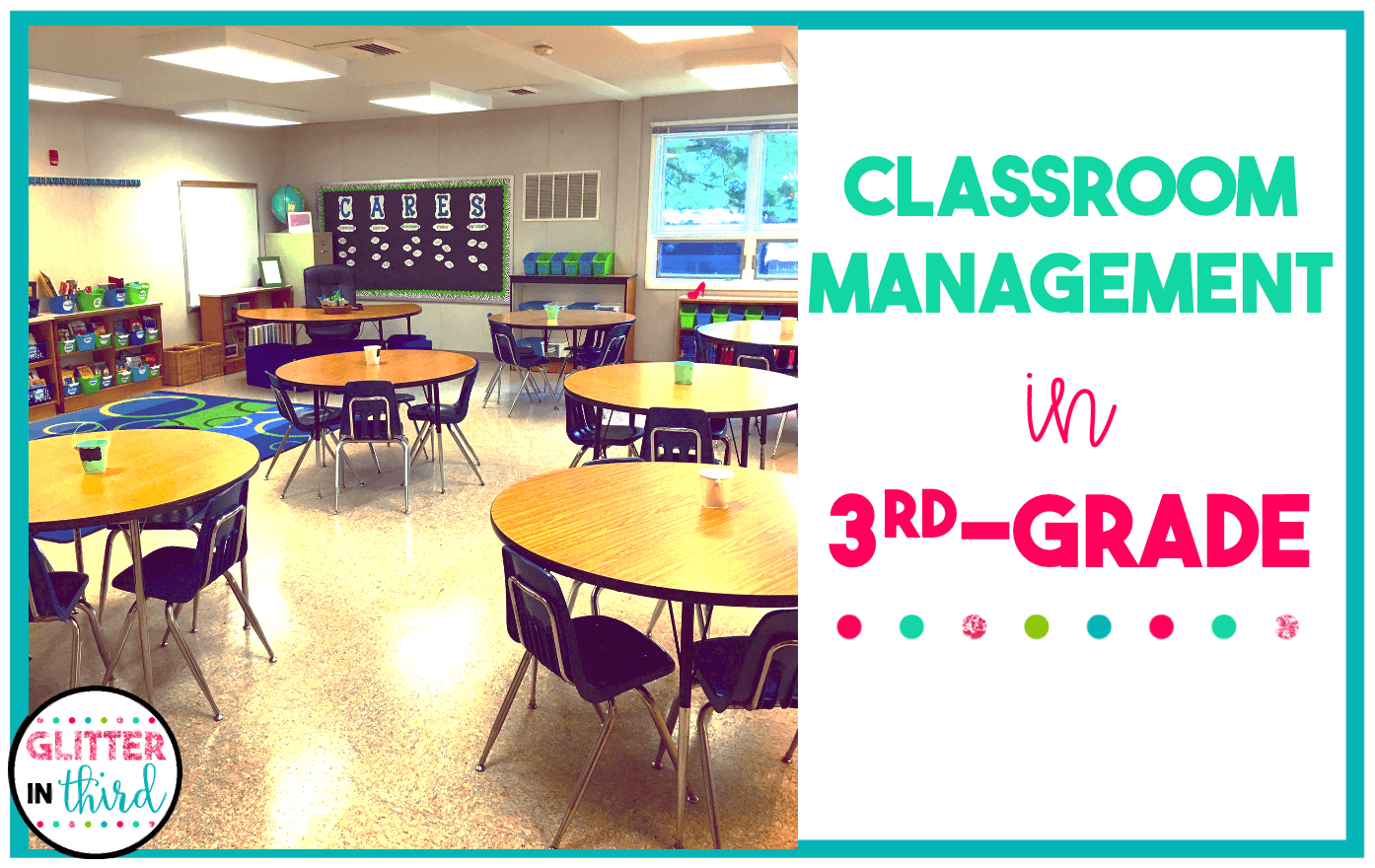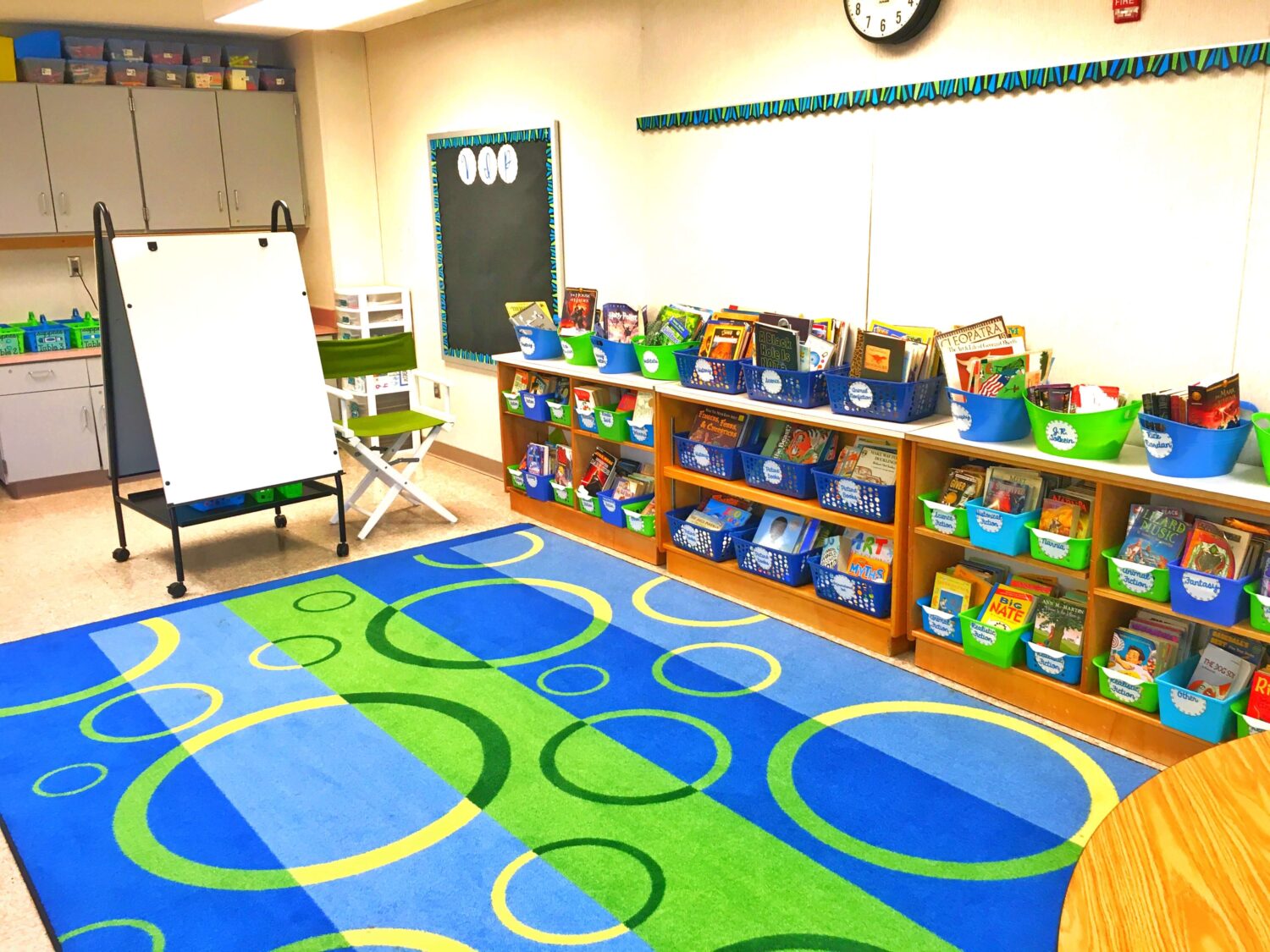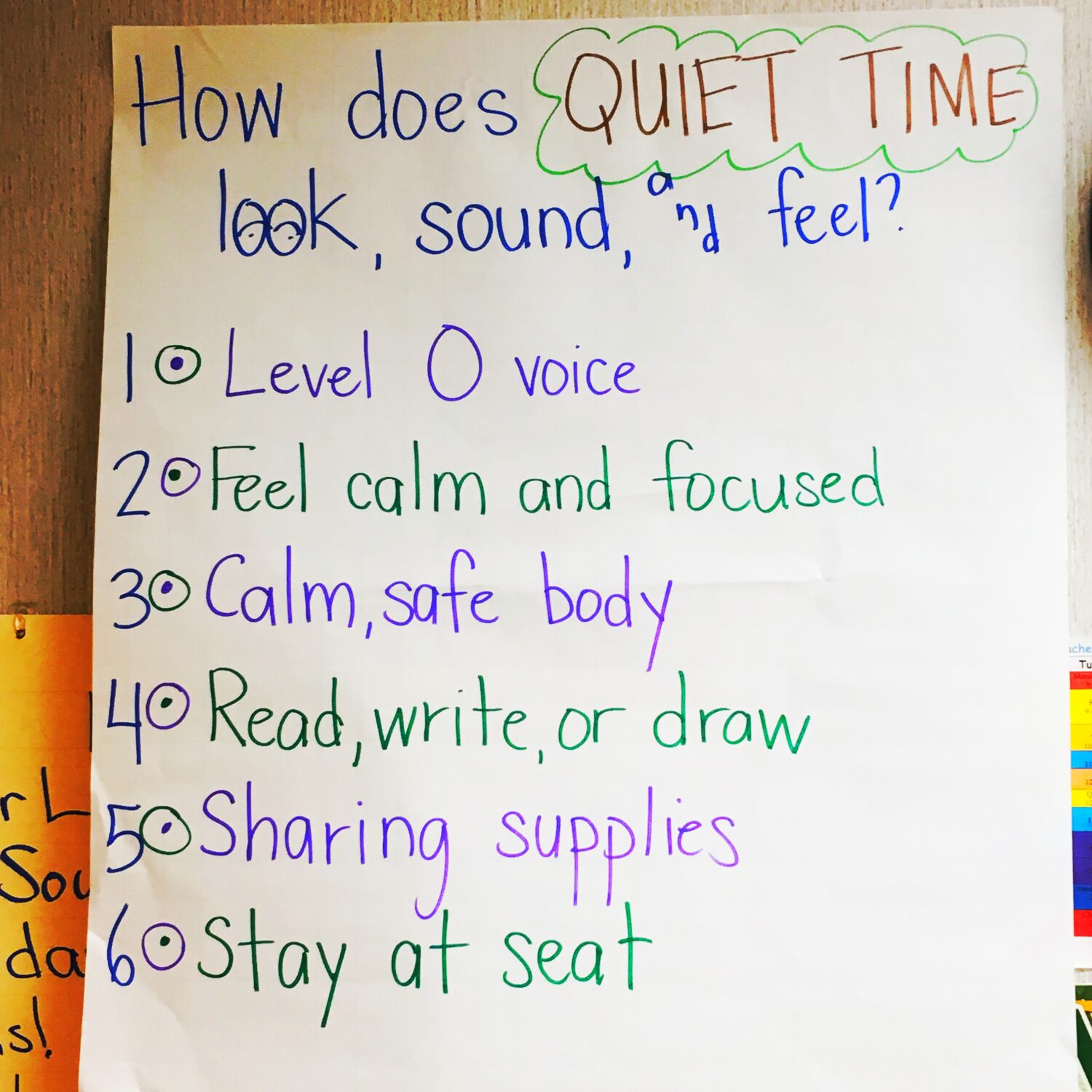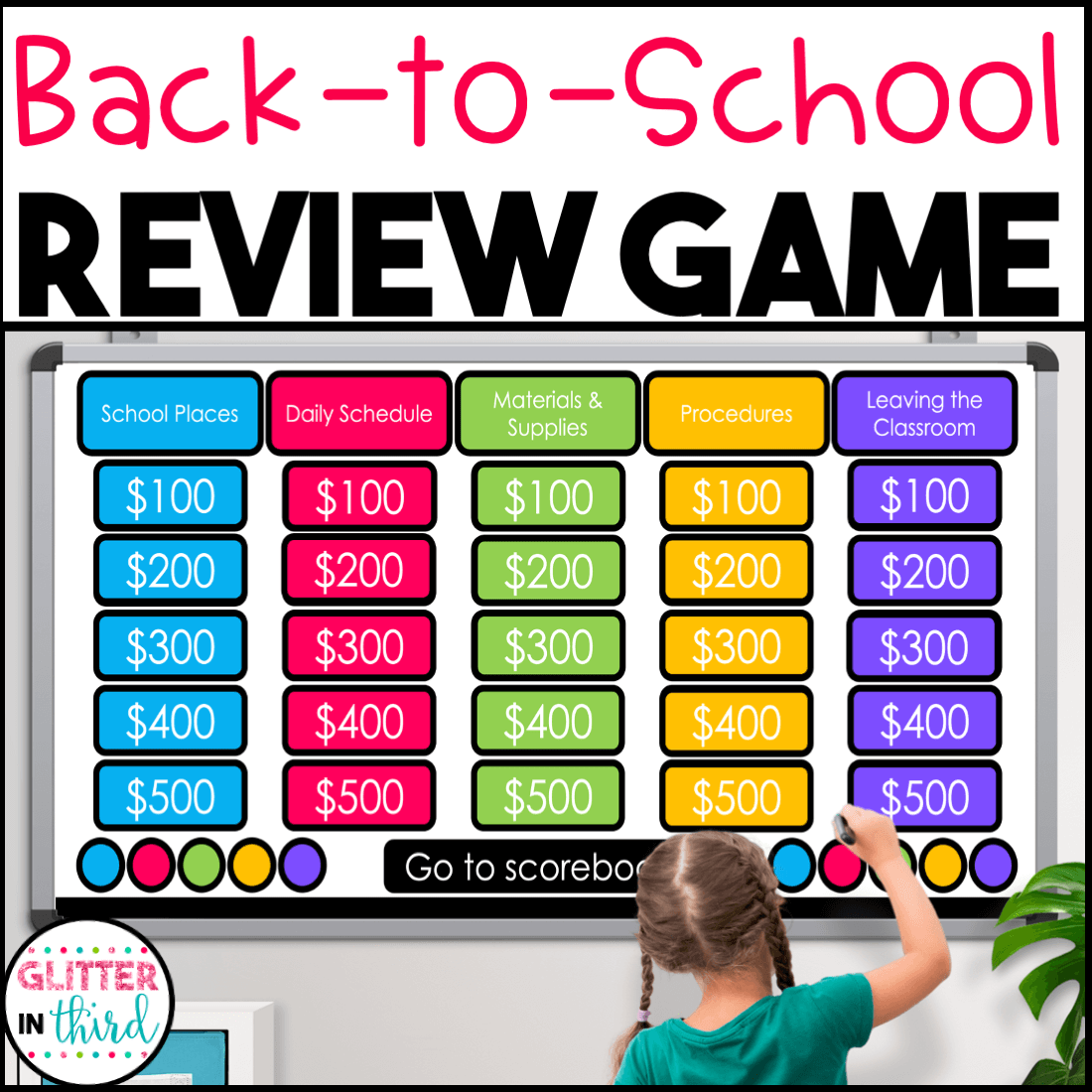Join the VIP Teacher Club!

3rd grade classroom management doesn’t have to mean keeping kids silent or handing out rewards all day. The real key? Clear routines, strong relationships, and consistent expectations that help students feel safe, respected, and capable.
Over the years, I’ve found that successful classroom management in 3rd grade comes down to teaching expectations explicitly, building community, and making routines part of our daily rhythm—not just something we review in week one and forget.
Much of what I do in my classroom—especially when it comes to routines, community-building, and student independence—is influenced by Responsive Classroom. Their approach is practical, proactive, and rooted in treating students with dignity while helping them build the skills they need to succeed.
If you’ve never explored Responsive Classroom before, I highly recommend checking out their books or seeing if your school offers training. The strategies are easy to implement and make a real difference in how smoothly your classroom runs.
Below, I’m sharing the exact strategies I use for classroom management in my 3rd grade classroom—plus a free game that helps you reinforce expectations in a fun way.

Before focusing on specific strategies, take a moment to consider your classroom layout. An organized, intentional space makes routines easier to follow and reinforces your expectations without you saying a word.
If you’re still tweaking your setup, check out these 3rd Grade Classroom Setup Ideas That Actually Work. You’ll find tips that support movement, independence, and structure—all things that make management easier in the long run.
Here’s exactly what I teach and reinforce to make sure our classroom runs smoothly all year.

A short, consistent Morning Meeting routine is one of the most effective tools I use all year. It gives students structure, helps them feel seen, and sets a calm tone for the day.
Each morning, we include:
It doesn’t take long, but it builds trust, strengthens our classroom community, and helps students settle into learning mode.
Want a ready-to-use, done-for-you option?
I use Morning Meeting Slides to keep everything consistent and engaging. The slides walk us through each part of the meeting with fun prompts, editable messages, and visual routines that even my wiggliest kids love. They’re great for easing into the day—especially in those first few weeks when students are still adjusting.
Don’t assume students know how to walk to the carpet, line up, sharpen a pencil, or ask to use the bathroom. Even if they’ve done it before, you still need to teach it your way.
At the start of the year, I teach every single routine step by step. We don’t just talk about it—we physically practice it. I ask a student to model exactly what the routine should look like while everyone watches. Then we all practice it together.
I never ask a student to show the “wrong way.” Kids remember what they see, and I don’t want the incorrect version stuck in their heads. Instead, I keep the focus on what success looks like.
We practice calmly walking to the carpet. We practice how to raise a hand and wait. We practice what to do when you need a new pencil or have to wait for help. And we do it again and again.
These may seem small, but teaching them clearly—and practicing them often—makes a big difference in how smoothly your classroom runs.
Choose one or two quiet, consistent attention signals and teach them like any other routine. I use a chime as my main signal, but any calm, clear cue works—clapping patterns, hand signals, or a simple call-and-response.
The key isn’t what you use—it’s how you teach it.
I introduce the chime on day one. We talk about what it means (stop, look, and listen), and then we practice. In the beginning, I turn it into a game to build excitement and help students internalize the expectation. We see how quickly and quietly the class can respond. I’ll say something like, “Let’s see if we can beat our record from this morning—ready?” Then I ring the chime, and we time how long it takes everyone to face forward, stay silent, and show they’re ready to listen.
It’s a low-pressure, high-engagement way to teach a routine that will serve you all year.
We also practice when the room is already quiet—not just when it’s noisy. That helps students associate the signal with calm, focused transitions rather than correction.
Once the chime is part of our routine, I rarely have to say a word. A single sound signals that it’s time to pause, and students know what to do.
Instead of calling out misbehavior, I focus on noticing and naming the behavior I want to see more of. This keeps the tone positive and helps guide students without constant correction.
Examples:
You’ll notice I don’t say “thank you” when pointing out expected behavior. That’s intentional. I want students to follow routines and manage themselves because it helps them and our classroom—not to please me. When we over-praise, we risk shifting their motivation from internal responsibility to teacher approval.
Instead, I use neutral, specific language that helps students recognize what success looks like and encourages consistency:
Other ways I reinforce positively:
This kind of reinforcement helps build a respectful, calm classroom where expectations feel clear, consistent, and student-owned.
When students make a mistake, I aim to respond with a consequence that is respectful, related to the behavior, and reasonable.
For example:
Logical consequences help students understand that their choices have impact, without feeling shamed or embarrassed.
I don’t believe in taking away recess—it’s an important part of the day for kids to move, connect, and reset. That said, I do think it’s reasonable for a student to spend one or two minutes practicing a routine, like walking quietly or lining up calmly, if that’s what they need to be successful. It’s not about punishment—it’s about giving them a quick chance to try again the right way.

After lunch or recess—when energy is high and focus is low—we take 5 to 10 minutes each day for Quiet Time. It’s not structured, and it’s not about work. The only rule? Be quiet and be by yourself.
This time gives students space to reset, recharge, and shift back into learning mode without jumping straight into a demanding academic task.
What students can do during Quiet Time:
They don’t have to do anything productive. It’s simply a chance to be still, independent, and quiet in their own space.
Over time, students come to look forward to this daily pause. It helps regulate emotions, improves transitions, and creates a calmer tone for the rest of the afternoon.
To make it work:
Quiet Time is not a reward or consequence. It’s part of our daily routine—just like Morning Meeting or packing up at the end of the day. And it works wonders for helping students self-regulate and settle back into learning.
Instead of starting the year by posting a list of rules, we take time during the first week to brainstorm them together. I ask students to think about what helps our classroom run smoothly and what makes it a safe, respectful place to learn.
Their ideas usually come pouring out—everything from “Don’t hit” to “Push in your chair” to “Be nice to everyone.” The list gets long (and sometimes very specific), but that’s part of the process.
Once we’ve gathered all their suggestions, we look for patterns and group them into three main categories. I usually guide them toward something like:
Then we revisit our original list and connect each student suggestion to one of these big ideas. This helps students understand that a lot of the “little” rules they named are actually part of a bigger picture.
We turn these into a short list of class expectations and post them as a reference point for the rest of the year. Because they helped create the rules, students are more likely to take ownership—and remind each other of them, too.

This free Back to School Jeopardy game gets students working together while reviewing key procedures like how to line up, where to turn in work, and what voice level to use. It’s team-based, editable, and a great way to strengthen your classroom management in those early weeks.
Enter your email below to get your free copy!

If you love the idea of Morning Meeting but don’t want to reinvent the wheel each day, my Morning Meeting Slides were made for you.
This resource includes a full year of done-for-you slides—covering over 180 days of Morning Meetings designed specifically for 3rd grade. Everything is age-appropriate, engaging, and ready to go.
This resource includes a full year of done-for-you slides—covering greetings, share questions, and quick activities.
What’s included:
Each slide is visually organized, easy to follow, and built to help your students ease into learning while reinforcing expectations and routines.
Whether you’re brand new to Morning Meeting or just looking to stay consistent without daily prep, these slides will save you time—and help your class start each day with purpose.
Grab it HERE.
Classroom management isn’t about control—it’s about community. When students feel respected, safe, and part of something, they’re more likely to stay engaged and meet expectations. Over time, simple strategies like clear routines, quiet reflection, and consistent follow-through help build a classroom environment that’s calm, kind, and connected.

Hey there, I’m Kelly! I I love helping teachers save time with technology and resources so they have more hours in the day to spend with family and friends. Take a look around to find new ideas that you can implement in your classroom today!